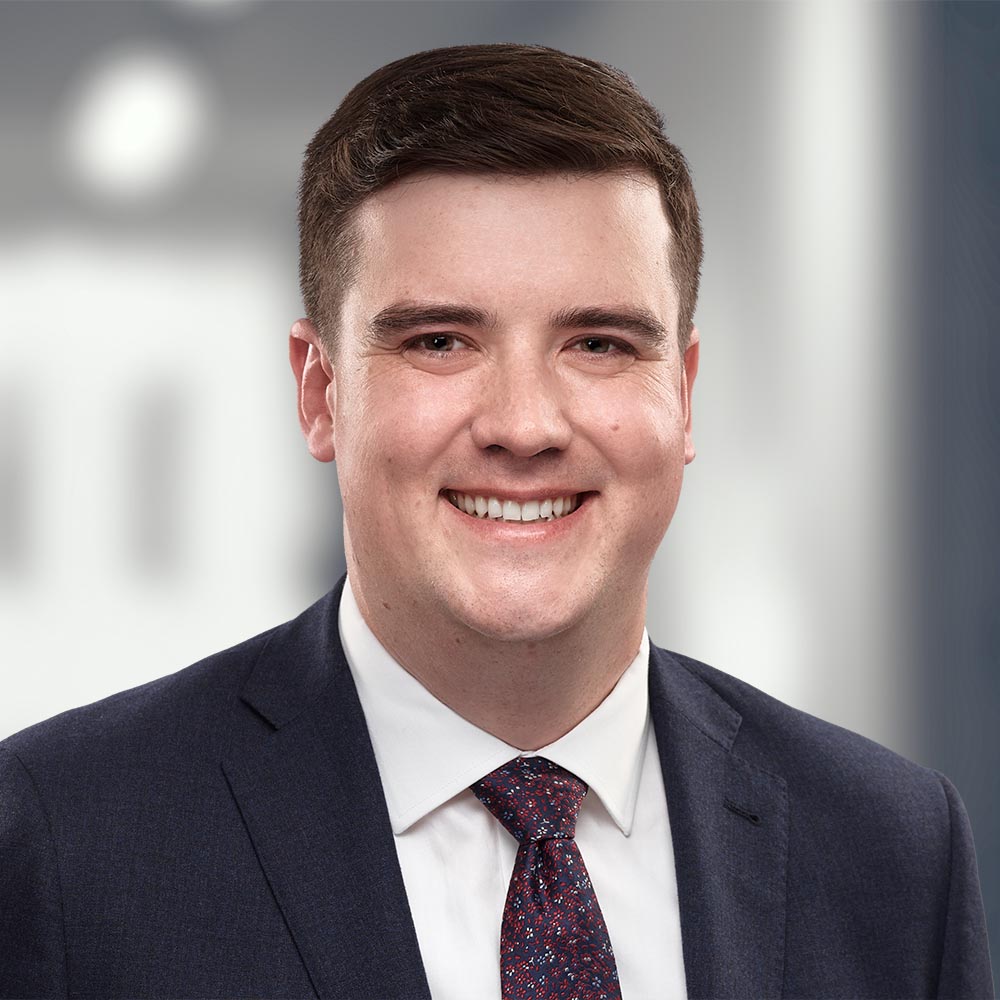Authors
 Jeremy Opolsky
Jeremy Opolsky
R. Craig Gilchrist
 Mike Noel
Mike Noel
Introduction
Fraudulent investment schemes present difficult challenges for those left behind to clean up the mess. When a company’s business is built on a large-scale fraud, innocent creditors left holding the bag will sometimes attempt to recover whatever they can through insolvency proceedings.
Despite insolvency law’s focus on maximizing recoveries for creditors, the path to recovery for defrauded creditors is rarely straightforward. Among other challenges, a trustee in bankruptcy (or a similar court-appointed officer) may be appointed near or after the basic two-year limitation period in the Limitations Act, 20021. Or it might take a trustee months, or years, to discover appropriate claims. This poses an important question: When was the claim considered to be discovered for the purposes of limitation periods? Given that the debtor company was involved in the fraud, does the limitation period begin concurrently with the wrongdoing and/or fraud? For example, are claims time-barred two years after payments are made in a fraudulent scheme?
The Ontario Court of Appeal’s recent Golden Oaks Enterprises Inc. v. Scott2 decision provides a framework to help answer many of these questions. Writing for the Court, Justice Sossin declined to apply the corporate attribution doctrine—which aims to impute the intentions or knowledge of a corporation’s wrongdoing principals onto the corporation itself—in a manner that would have resulted in a trustee’s clawback claims being discoverable by a bankrupt corporate debtor prior to its bankruptcy (and thus barred under the Limitations Act).
Justice Sossin built on the Court of Appeal’s recent decision in Ernst & Young Inc. v. Aquino3 by focusing his analysis on the public policy objectives underlying the corporate attribution doctrine. For the Court of Appeal, those objectives favoured an expansive, purposive view of the doctrine, resulting in a decision that permitted the survival of claims to recover usurious interest and commission payments from a Ponzi scheme.
The facts
Golden Oaks was a Ponzi scheme
Golden Oaks Enterprises Inc. was a business operating in Ottawa between 2009 and 2013. From an outsider’s perspective, Golden Oaks appeared to be a well-managed, socially-conscious and profitable business focused on providing disadvantaged tenants with opportunities to buy a home. In reality, Golden Oaks was a Ponzi scheme.
Golden Oaks’ sole officer and principal, Jean-Claude Lacasse, advertised its “Rent2Own Canada” operations as its main business4. Rent2Own purchased residential properties and rented them to tenants who did not qualify for mortgages from traditional lenders, thereby allowing them to save up for a down payment and purchase the rented property from Golden Oaks5. Rent2Own required enormous amounts of capital to acquire and maintain its stock of residential properties, but never generated enough rental income to cover those costs, resulting in millions of dollars of losses6.
Ostensibly in an effort to fund Rent2Own’s capital needs, Mr. Lacasse, together with certain individuals that he employed, recruited numerous investors to lend Golden Oaks money at high interest rates. Mr. Lacasse paid his recruiters commissions for each new investor they brought into the scheme7.
Between 2009 and 2013, Golden Oaks issued 504 short-term promissory notes to 153 investors, from whom it collected $16.4 million in deposits8. Most of those funds were not used to support Rent2Own but were instead used to repay loans to other investors—new money to repay old money9. Near its collapse, only 3% of Golden Oaks’ revenue came from rental payments from the Rent2Own business, compared to 92% which came from investors10.
Inevitably, as the business grew unstable, Golden Oaks’ attractive interest rates began to snowball. While the rates started at 12% to 40% in the scheme’s earlier years, they eventually grew to exceed the usurious 60% criminal rate of interest11. In spring 2013, the scheme collapsed12.
The trustee’s unjust enrichment claims
On July 9, 2013, Doyle Salewski Inc. [the Trustee] was appointed by the Ontario Superior Court of Justice as receiver and manager in respect of Golden Oaks and Mr. Lacasse. Shortly thereafter it became trustee of their estates upon their subsequent bankruptcies13. Over the course of its investigation, the Trustee uncovered the fraud and brought over eighty actions against various defendants who had been investors in Golden Oaks14.
Seventeen of those actions were heard in a summary trial in December 2018. In those seventeen actions, the Trustee claimed in unjust enrichment for, among other things, repayment of funds Golden Oaks paid to investors as usurious interest on their promissory notes or as commission payments from their referral of new investors15.
However, the Trustee commenced these actions more than two years after Golden Oaks made any payments to investors. The Trustee therefore needed to overcome the issue of whether its claims were time-barred by operation of the basic two-year limitation period under section 4 of the Limitations Act16.
The defendant investors asserted that the Trustee’s claims were time-barred because the impugned payments were at all times discoverable by Golden Oaks, the Trustee’s predecessor in interest to the claims. They claimed that the corporate attribution doctrine bridged the knowledge gap between Golden Oaks and Mr. Lacasse by imputing his knowledge of the fraudulent payments onto the company17.
The Trustee, on the other hand, argued that Mr. Lacasse’s knowledge of the fraud could not be imputed on Golden Oaks, because corporate attribution does not apply in the context of a fraudulent Ponzi scheme18. The Trustee asserted that its claims were not discoverable until its investigation had uncovered sufficient details of the fraud to commence an appropriate claim, meaning the claim was brought before the expiry of the limitation period.
The trial decision
At trial, Justice Gomery held that the Trustee was pursuing the claims as a successor in interest to Golden Oaks19. Section 12(1) of the Limitations Act makes a claim discoverable on the day that a claimant’s predecessor in interest knew or ought to have known about the wrongful conduct. Therefore, the discoverability issue was whether Golden Oaks, through corporate attribution, had prior knowledge of the wrongdoing.
Justice Gomery held that Golden Oaks did indeed know about the fraudulent investment scheme. The question was focused on the doctrine of corporate attribution, which imputes the knowledge of the directing mind of a corporation (here Mr. Lacasse) onto the corporation itself. For the doctrine of corporate attribution to apply the wrongdoing must not be totally in fraud of the corporation and not be, by design or result, partly for the benefit of the company20. But here Mr. Lacasse’s actions were not completely against the company’s interests21. Although a large portion of investor money was used to pay other investors and Mr. Lacasse, the remaining funds were used to fund the company’s ongoing expenses and capital costs22. The fraud was therefore partly for the company’s benefit.
As a result, Justice Gomery found that the corporate attribution doctrine applied, and that Golden Oaks was imputed to have known what Mr. Lacasse knew about the payments to the investors23.
Despite this finding, Justice Gomery nonetheless concluded that the claims were not discoverable by Golden Oaks because of the company’s restricted “abilities and circumstances” while controlled by Lacasse24.
The decision of the Court of Appeal
The investors appealed Justice Gomery’s decision to claw back the usurious interest payments. Justice Sossin, writing unanimously for the Court, dismissed this ground of appeal. For public policy reasons, Mr. Lacasse’s knowledge of the Ponzi scheme and the impugned payments could not be attributed to Golden Oaks, meaning Golden Oaks lacked the requisite knowledge to discover the unjust enrichment claims prior to the Trustee’s appointment. The Trustee’s claims were thus not barred by the Limitations Act25.
Trustee as successor in interest
The Court of Appeal noted Justice Gomery’s conclusion that the Trustee had brought the actions as a successor to Golden Oaks, meaning that under section 12(1) of the Limitations Act, her analysis was focused on when Golden Oaks had discovered the claims26.
However, whether the Trustee was a successor of Golden Oaks was itself under appeal. Given Justice Sossin’s conclusion that Golden Oaks did not have the requisite knowledge of the impugned payments, the claims were in any event discoverable by the Trustee within the limitations period. The Court of Appeal therefore found it unnecessary to address Justice Gomery’s finding of successorship27. But its decision to expressly refrain from addressing this issue, it held, should not be taken as necessarily agreeing with Justice Gomery’s holding28. The Court of Appeal will have to address the application of section 12(1) in a future appeal.
Corporate attribution through a public policy lens
In assessing Golden Oaks’ alleged knowledge of the fraud, Justice Sossin reviewed the jurisprudential developments on corporate attribution following the Supreme Court of Canada’s Canadian Dredge decision that Justice Gomery relied on in her trial reasons. Subsequent case law had incorporated a degree of flexibility into the corporate attribution analysis, placing a heightened emphasis on the doctrine’s public policy objectives.
This more flexible approach was first articulated by the Supreme Court in Deloitte & Touche v. Livent Inc. (Receiver of)29. While Canadian Dredge was a decision focused on determining whether criminal liability ought to flow to a corporation for the wrongful acts of its directing minds, the Supreme Court in Livent later affirmed that courts retain discretion to refrain from applying corporate attribution where, in the circumstances, it would not be in the public interest to do so30.
The Supreme Court again dealt with this issue in Christine DeJong Medicine Professional Corp. v. DBDC Spadina Ltd., which Justice Sossin relied on for the principle that victims of fraud should be discouraged from suing each other: “victims of a multi-party fraud should not use the corporate attribution principle for the purpose of enlarging their potential recovery at the expense of their fellow victims.”31
In the insolvency context, the Court of Appeal had addressed corporate attribution only four months prior. In Aquino, the trustee and the monitor of corporate debtors brought claims to claw back certain payments flowing from a false invoicing scheme perpetrated by the debtors’ principal, John Aquino, as transfers at undervalue under section 96 of the Bankruptcy and Insolvency Act.32 In order to succeed, the trustee and monitor in Aquino needed to establish that the corporate debtors had intended to defraud their creditors, which they argued could be imputed from Mr. Aquino’s conduct under the corporate attribution doctrine. Mr. Aquino and the other perpetrators argued that since Mr. Aquino had been acting totally in fraud of the corporate debtors, the doctrine was inapplicable.
In its decision in Aquino, the Court of Appeal recognized that unique policy objectives exist in the insolvency context—namely, that the BIA is remedial legislation, and the core social purpose of section 96 is to provide proper redress for creditors.33 The claims brought by the monitor and the trustee sought to reclaim fraudulent payments for the benefit of legitimate creditors, and the Court held that any approach that permitted fraudsters to obtain a benefit in the insolvency process at the expense of creditors would be perverse34.
As a result, the Court in Aquino provided a new, reformulated test for corporate attribution in the insolvency arena: Who should bear responsibility for the fraudulent acts of a company’s directing mind that are done within the scope of his or her authority—the fraudsters or the creditors35?
Justice Sossin considered each of these cases and extracted three principles underlying the corporate attribution doctrine:
- courts should be sensitive to the context and field of law in which corporate attribution arises;
- the exercise of the court’s discretion is grounded in public policy and the social implications of holding a corporation accountable; and
- uses of corporate attribution that encourage victims of fraud to enlarge their recovery at the expense of other victims, or that permit those who have benefitted from fraud to insulate themselves from accountability against other parties who are victim of the fraud, are to be avoided36.
Public policy precluded corporate attribution
In applying those principles to Golden Oaks, Justice Sossin held that the court’s discretion should have been exercised so as not to attribute the knowledge of Mr. Lacasse on Golden Oaks, thereby allowing the Trustee’s unjust enrichment claim to survive the Limitations Act37.
There were strong public policy grounds to resist imputing Mr. Lacasse’s knowledge on Golden Oaks. It would have permitted the fraud’s beneficiaries to evade liability for their fraudulent conduct, thereby insulating them from the consequences of their receipt of the payments from the Ponzi scheme38.
Corporate attribution would have also undermined a fundamental tenet of insolvency law: the equitable distribution of a debtor’s assets between its creditors. The Trustee’s recovery of the fraudulent payments was meant to enlarge recoveries for Golden Oaks’ other creditors39. With those claims barred, victims of the fraud who received usurious interest payments would be permitted to use corporate attribution to enlarge their potential recovery at the expense of their fellow victims40.
Livent applies to one-person corporations
Interestingly, the Court of Appeal refused to apply corporate attribution even though Golden Oaks was essentially a one-person company41. Justice Sossin held that even though Golden Oaks was entirely owned and controlled by Mr. Lacasse (the sole director and officer) there was no principled basis to impute Mr. Lacasse’s knowledge onto the company on those grounds42.
In Livent, the Supreme Court had left this issue for another day. The Court of Appeal’s response in this case demonstrates the preponderance of public policy in the corporate attribution analysis. Indeed, Justice Sossin held that applying corporate attribution in the circumstances would have failed to promote corporate responsibility to prevent fraud and regulatory non-compliance when companies are controlled by a single person43.
Conclusions
In Golden Oaks, Justice Sossin affirmed that courts must take a purposive, policy-oriented approach when exercising their discretion to apply corporate attribution in the insolvency context. Where the insolvency involves fraud, both Golden Oaks and Aquino implore courts to ask with whom the consequences of that fraud should lie—fraudsters or legitimate creditors.
Under this formulation, it is difficult to imagine a scenario where admitted fraudsters succeed in resisting claims brought by legitimate creditors under the auspices of insolvency law. As a result, Justice Sossin’s decision strengthens the tools available to trustees, monitors and creditors in insolvency proceedings to clean up the mess left behind by large-scale fraud.
To achieve these outcomes, courts must keep the remedial objectives of insolvency legislation at the forefront of their corporate attribution analyses. Judges should strive to apply (or to not apply) corporate attribution in a manner that advances the equitable distribution of assets to creditors and favours the interests of creditors over fraudsters.
- Limitations Act, 2002, S.O. 2002, c. 24 [Limitations Act].
- Golden Oaks Enterprises Inc. v Scott, 2022 ONCA 509 [Golden Oaks].
- Ernst & Young Inc. v Aquino, 2022 ONCA 202 [Aquino]. Mr. Opolsky and Mr. Gilchrist acted for KSV Kofman Inc., in its capacity as trustee in bankruptcy of certain of the corporate debtors, in the Aquino matter.
- Doyle Salewski Inc. v Scott, 2019 ONSC 5108, para 3. [Doyle Salewski]
- Ibid.
- Doyle Salewski, supra note 5, paras 59-61.
- Doyle Salewski, supra note 5, paras 71-73.
- Doyle Salewski, supra note 5, paras 5 and 74.
- Doyle Salewski, supra note 5, para 102.
- Doyle Salewski, supra note 5, para 65.
- Criminal Code, R.S.C. 1985, c. C-46, s 347; Doyle Salewski, supra note 5, paras 67-68. In one case, a lender was paid an equivalent annual interest rate of 67,000% on his promissory note: Doyle Salewski, supra note 5, para 236.
- Doyle Salewski, supra note 5, para 81.
- Doyle Salewski, supra note 5, paras 82-83.
- Doyle Salewski, supra note 5, paras 46 and 91.
- Doyle Salewski, supra note 5, paras 8-10.
- Limitations Act, supra note 2.
- Doyle Salewski, supra note 5, para 408.
- Ibid.
- Doyle Salewski, supra note 5, paras 391 and 396.
- Canadian Dredge, supra note 21, pp 713-14.
- Doyle Salewski, supra note 5, paras 78, 394 and 412.
- Doyle Salewski, supra note 5, para 412.
- Doyle Salewski, supra note 5, para 413.
- Doyle Salewski, supra note 5, paras 421-422.
- Golden Oaks, supra note 3, para 59.
- Golden Oaks, supra note 3, para 38.
- Golden Oaks, supra note 3, paras 59-60.
- Golden Oaks, supra note 3, para 60.
- Deloitte & Touche v Livent Inc. (Receiver of), 2017 SCC 63 [Livent].
- Golden Oaks, supra note 3, para 42; Livent, supra note 27, para 104.
- Golden Oaks, supra note 3, para 45; citing Christine DeJong Medicine Professional Corp. v. DBDC Spadina Ltd., 2019 SCC 30, para 2 [Christine DeJong]. Mr. Opolsky acted for Christine DeJong Medicine Professional Corp., the appellant in the Christine DeJong decision.
- Aquino, supra note 2, para 2. Bankruptcy and Insolvency Act, R.S.C. 1985, c. B-3 [BIA]. The monitor asserted its section 96 claims through section 36.1 of the Companies’ Creditors Arrangement Act, R.S.C. 1985, c. C-36 [CCAA], which permits a monitor or interested party to access the BIA’s clawback remedies in the CCAA context.
- Golden Oaks, supra note 3, para 49; citing Aquino, supra note 2, para 79.
- Ibid.
- Golden Oaks, supra note 3, para 50.
- Golden Oaks, supra note 3, para 50.
- Ibid.
- Golden Oaks, supra note 3, para 57.
- Golden Oaks, supra note 3, para 57.
- Golden Oaks, supra note 3, para 58.
- Golden Oaks, supra note 3, para 53.
- Ibid.
- Golden Oaks, supra note 3, para 57.
To discuss these issues, please contact the author(s).
This publication is a general discussion of certain legal and related developments and should not be relied upon as legal advice. If you require legal advice, we would be pleased to discuss the issues in this publication with you, in the context of your particular circumstances.
For permission to republish this or any other publication, contact Janelle Weed.
© 2025 by Torys LLP.
All rights reserved.